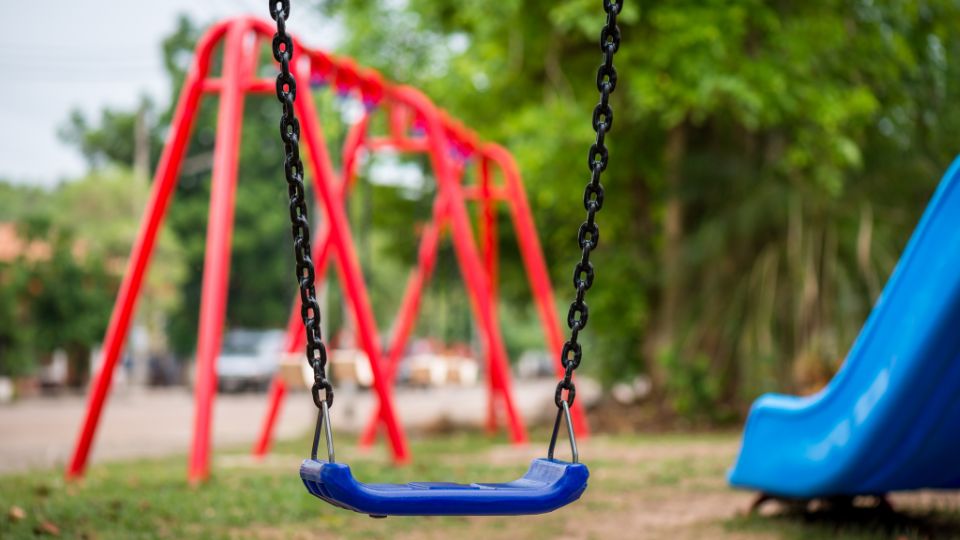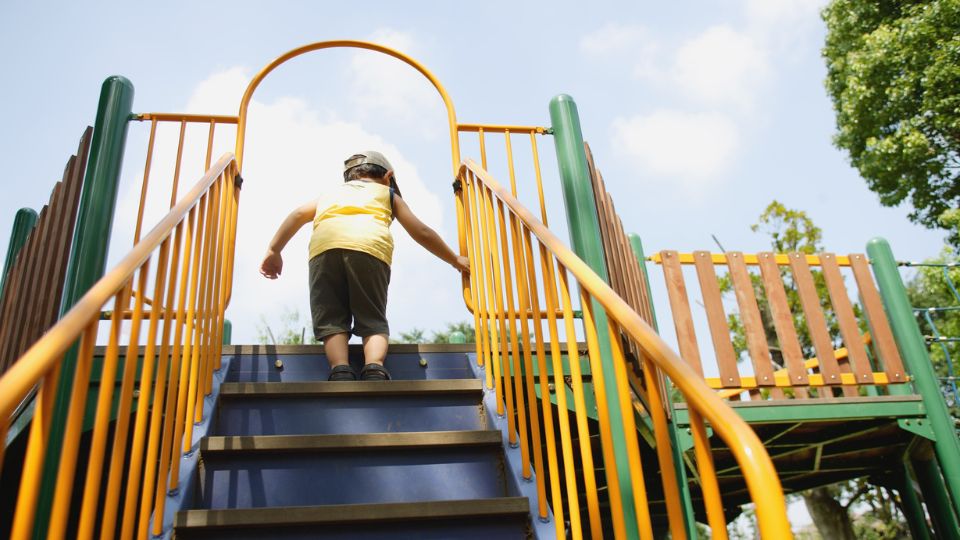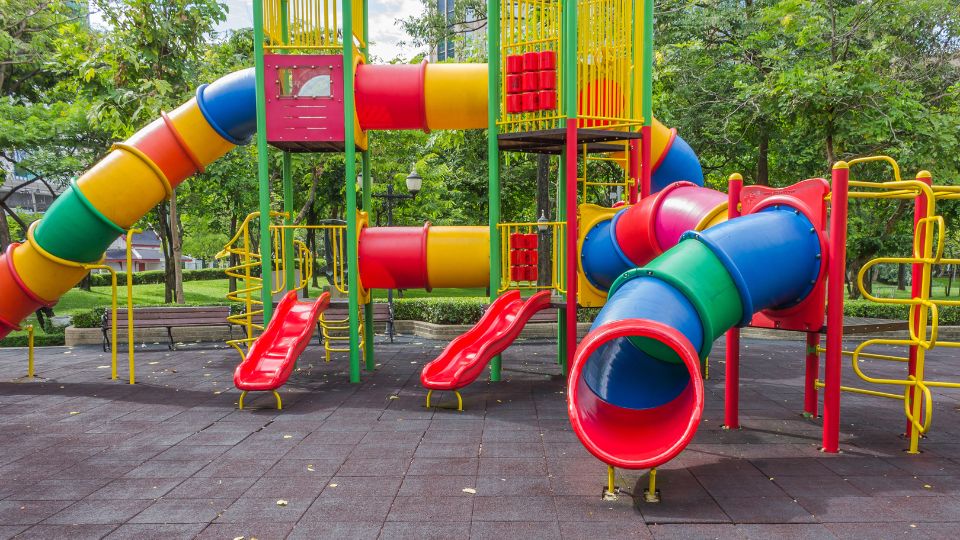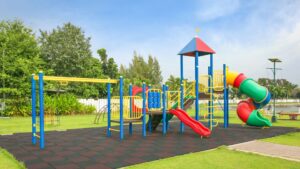Abgenutzte Rutschen, rostige Schaukeln und fehlende Schrauben sehen nicht nur unansehnlich aus - sie stellen auch ein Sicherheitsrisiko dar. Ganz gleich, ob Sie einen Schulhof, einen öffentlichen Park oder ein Spielgerät im Hinterhof verwalten, Sie sollten wissen, wo und wie Sie die Spielplatz-Ersatzteile ist entscheidend. In diesem Leitfaden mit 2.000 Wörtern erfahren Sie, wie Sie:
- Zustand der Ausrüstung bewerten
- Identifizieren Sie Hersteller und Modell
- Kontaktaufnahme mit Lieferanten und Anmeldung von Garantieansprüchen
- Nutzen Sie Online-Foren und Aftermarket-Optionen
- Do-it-yourself-Reparaturen - und wann man einen Profi rufen sollte
- Instandhaltung der Ausrüstung, um zukünftige Ersatzbeschaffungen zu minimieren

1. Bewertung Ihrer Spielplatzgeräte
Bevor Sie Teile bestellen, sollten Sie genau bestimmen, was ersetzt werden muss.
1.1 Visuelle Inspektion
- Rost und Korrosion: Überprüfen Sie Metallpfosten, Schraubenköpfe und Halterungen.
- Verblasster oder gerissener Kunststoff: Prüfen Sie Rutschen, Tunnel und Platten auf UV-Schäden.
- Lose Befestigungselemente und Reibungsgeräusche: Achten Sie auf Knarren, das auf verschlissene Gelenke hinweist.
1.2 Vorrang für die Sicherheit
Ersetzen Sie sofort alles, was ein Kind verletzen könnte - lose Ketten, scharfe Kanten oder gesplittertes Holz. Für kosmetische Probleme wie abgeplatzte Farbe sollten Sie einen späteren Wartungszyklus einplanen.

2. Identifizierung von Hersteller und Modell
Die genaue Identifizierung beschleunigt den Teileabgleich.
2.1 Suchen Sie das Typenschild
Suchen Sie das Metallschild oder den Aufkleber - oft unter Rutschen, in Tunneln oder an Stützbalken. Darauf ist aufgeführt:
- Name des Herstellers
- Modellnummer
- Seriennummer
2.2 Verlorene Dokumentation wiederherstellen
- Online-Handbücher: Viele Marken bieten PDF-Handbücher über die Modellsuche an.
- Aufzeichnungen des Installateurs: Prüfen Sie die Kaufbelege oder Installationsunterlagen.

3. Kontaktaufnahme mit dem Hersteller oder autorisierten Lieferanten
Originalteile gewährleisten perfekten Sitz und Sicherheit.
3.1 Sammeln Sie Ihre Informationen
Halten Sie sich bereit:
- Modell- und Seriennummern der Geräte
- Fotos der beschädigten Komponenten
- Kaufdatum und Garantieunterlagen
3.2 Erreichen der Zielgruppe
- E-Mail oder Telefon: Nutzen Sie die Service-Hotline des Herstellers.
- Autorisierte Vertriebspartner: Sie führen häufig gängige Verschleißteile wie Lager, Schaukelsitze und Rutschenreparaturen.
- Gewährleistungsansprüche: Bestätigen Sie die Abdeckung und die Lieferzeiten - einige Teile werden im Rahmen der Garantie kostenlos geliefert.

4. Einreichung eines Garantieantrags
Auf viele Spielplatzteile wird eine Garantie von 1-5 Jahren gewährt - handeln Sie schnell!
- Begriffe überprüfen: Überprüfen Sie den Versicherungszeitraum und die ausgeschlossenen Gegenstände (z. B. Vandalismus).
- Dokumentation einreichen: Legen Sie Fotos, Seriennummern und Kaufbelege vor.
- Nachbereitung: Führen Sie Aufzeichnungen über die Kommunikation und die voraussichtlichen Liefertermine.

5. Nutzung von Online-Ressourcen
Wenn Werksteile nicht mehr verfügbar sind oder nicht mehr hergestellt werden, ist das Internet Ihr Freund.
5.1 Foren und Gemeinschaften
- Gruppen zur Instandhaltung von Spielplätzen: Facebook, Reddit oder spezielle Foren, in denen Fachleute Tipps und geprüfte Anbieter austauschen.
- DIY-Videos und -Blogs: Schritt-für-Schritt-Reparaturanleitungen enthalten häufig Links zu Drittanbietern.
5.2 Aftermarket und Drittanbieter
- Zertifizierte Ersetzungen: Unternehmen wie WillyGoat oder PlayPartsSupply bieten Komponenten im OEM-Stil an.
- Universelle Hardware-Kits: Schraubensätze, Halterungen und Anschlüsse, die mit mehreren Marken kompatibel sind.

6. DIY-Reparaturen und kreative Wiederverwendung
Bei kleineren Reparaturen oder Budgetbeschränkungen sollten Sie sichere Heimwerkerlösungen in Betracht ziehen.
6.1 Allgemeine Materialien
- Metallklammern und Holzbretter: Verstärken Sie geschwächte Strukturen.
- PVC-Rohre und -Verbindungen: Bauen Sie neue Handläufe oder reparieren Sie Spieltafeln.
- Hochbelastbare Seile und Ketten: Ersetzen Sie verschlissene Schaukelaufhängungen.
Warnung: Versuchen Sie nur bei nicht-strukturellen Teilen, diese selbst zu reparieren. Bevorzugen Sie bei sicherheitskritischen Bauteilen immer zertifizierten Ersatz.
7. Wissen, wann man einen Fachmann rufen sollte
Komplexe oder strukturelle Schäden erfordern fachkundige Hilfe.
7.1 Rote Flaggen
- Stark verrostete oder verbogene Stützpfosten
- Gerissene Hauptträger oder tragende Schweißnähte
- Bodenverankerungen oder Fundamente verschieben sich
7.2 Suche nach qualifizierten Technikern
- Lokale Verweise: Schulen, Parkverwaltungen oder Elterngruppen empfehlen oft zuverlässige Auftragnehmer.
- Branchenverzeichnisse: Suchen Sie bei den Verbänden für Spielplatzsicherheit nach zertifizierten Installateuren.
8. Ordnungsgemäße Installation und routinemäßige Wartung
Gut installierte und gewartete Geräte haben eine längere Lebensdauer.
8.1 Bewährte Praktiken bei der Installation
- Beachten Sie die Drehmomentangaben des Herstellers für die Schrauben.
- Verwenden Sie in Außenbereichen verzinkte oder rostfreie Beschläge.
- Achten Sie auf die richtige Verankerungstiefe und die Stabilität der Betonfundamente.
8.2 Wartungsplan
| Frequenz | Aufgaben |
|---|---|
| Monatlich | Bolzen nachziehen, Ketten prüfen, Verschleißstellen inspizieren |
| Vierteljährlich | Bewegliche Teile schmieren, Oberflächen waschen |
| Jährlich | Metall neu lackieren, verschlissene Schaukelsitze ersetzen, Sicherheitsbelag überprüfen |
Beibehaltung einer Wartungstagebuch hilft dabei, Inspektionen und den Austausch von Teilen im Laufe der Zeit zu verfolgen.
9. Verhinderung künftiger Teileknappheit
Planen Sie im Voraus, um Ausfallzeiten zu vermeiden.
- Kritische Ersatzteile auf Lager: Halten Sie zusätzliche Schaukelsitze, Schraubensätze und Rutschenauskleidungen bereit.
- Bestellen Sie frühzeitig für Auslaufmodelle: Die Hersteller können ältere Teile auslaufen lassen.
- Upgrade auf modulare Systeme: Neuere Spielgeräte verwenden standardisierte Komponenten, die leichter zu ersetzen sind.
Schlussfolgerung
Die Beschaffung der richtigen Spielplatzteile muss keine Schnitzeljagd sein. Indem Sie Schäden systematisch bewerten, Ihre Geräte identifizieren, Herstellergarantien nutzen und Online- und Zubehörmarkt-Ressourcen anzapfen, können Sie dafür sorgen, dass Ihr Spielplatz über Jahre hinweg sicher und attraktiv bleibt und Spaß macht. Denken Sie daran: Rechtzeitige Wartung und professionelle Unterstützung bei größeren Reparaturen sind eine Investition in Sicherheit und Langlebigkeit - jedes Ersatzteil ist es wert.




